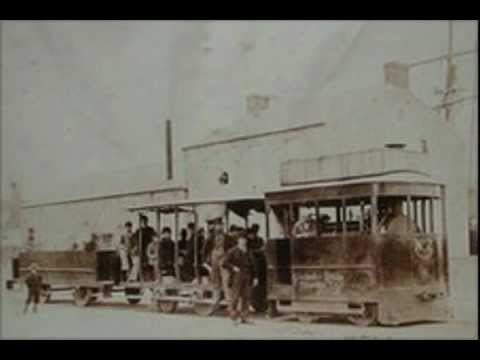Status Closed Route length 3 miles (4.8 km) Close 1934 | Propulsion system(s) Electric Open 1892 Locale Guernsey | |
 | ||
Track gauge 1,435 mm (4 ft 8 ⁄2 in) | ||
The guernsey railway tramway
The Guernsey Railway opened as the Guernsey Steam Tramway on 6 June 1879 with two steam tram engines, more being added later. It was later converted to an electric tramway, which began working on 20 February 1892. The system closed on 9 June 1934. This leaves Alderney as the only Channel Island with a working railway.
Contents
- The guernsey railway tramway
- Guernsey Steam Tramway Company
- Statistics
- List of steam tram engines
- Guernsey Railway Company
- Electric Fleet
- Activity since closure
- References
Guernsey Steam Tramway Company
The Guernsey Steam Tramway Company was registered in London on 29 May 1878, the concession having been granted by the States of Guernsey on 2 May 1877, and confirmed by an Order in Council of 13 August 1877.
The line extended for about three miles from Saint Peter Port, the principal town, to Saint Sampson's, a smaller port which at that time had extensive granite quarries. The line was single track with passing loops, with a maximum gradient of 1 in 32.
Three Merryweather steam tram engines were delivered in 1877 at a cost of £700 each (equal to £59,428 today). Service commenced on 6 June 1879 and was well received, 2,000 people being carried on the first two days. Trains ran hourly between the harbours, taking 18 minutes for the journey, and consisting of a first class closed car, and a second class open car. Fares were 3d for first class and 2d for second. Each engine ran 72 miles daily.
In 1885 the locomotive stock had increased to its maximum of six, comprising two by Merryweather and four by Hughes of Loughborough. From this time there was a gradual loss of passengers owing to horse bus competition, favoured no doubt by the freedom from noise and smoke. Trams ceased running on 22 January 1889, but service resumed on 2 December 1889 after the company had been reorganised. It was re-registered as the Guernsey Railway Company on 22 September 1889.
Statistics
List of steam tram engines
Guernsey Railway Company
The line was electrified in 1892 by Siemens, and electric services started on 20 February 1892. Apart from an experimental line in Leeds, it was the first street tramway in the British Isles to be supplied with current from an overhead wire.
Initial services were offered with two cars, power being supplied by a Marshall's semi-portable engine and generator capable of running four cars. The line was run under lease by Siemens until things were running smoothly when in October 1893 the Guernsey Railway Company took over. The Railway Company also bought out the horse bus competition for £3,000 (equal to £300,078 today), plus £1,500 shares. In 1898 the last of the steam trams were sold.
The depot was at Hougue-a-la-Pierre, and consisted of a shed with three tracks with pits, together with the power house and workshops, all built of stone and brick. The power plant comprised two locomotive type boilers, each fitted with a Friedman injector and a feed water heater, and fed by a Worthington pump.
The normal weekday service was 10 minutes. An early car left St. Sampson's at 6.20 am, arriving in town at 6.40. It was driven by the veteran Mr. Dunn, the night cleaner. Six cars were usually used with eight crews, and one more for meal relief. On Sundays, cars commenced running at 1.30 pm. The men had one day off in eight. On holidays and football match days, all the cars and trailers were in use, and were packed solid. During the match they were parked on the siding at Vale Road, when the crews were apparently at liberty to watch the game so this "split turn" was not unpopular.
In the First World War, 50 of the staff joined up, and six were killed. In 1920 there were further track renewals, a new loop was provided at Bulwer Avenue, and also a new repair shed was constructed.
During the first years of the 1930s, passenger traffic declined from over 1 million per year to less than half that. A financial investigation found that trams cost 9d per mile, whereas buses cost 5½d per mile. Revenues had fallen and the company had not paid a dividend since 1923.
The last day of service was 9 June 1934. Two days later track removal commenced and the sale of tramcar bodies commenced.
Statistics
Electric Fleet
The company livery was maroon and cream.
Activity since closure
Guernsey Railway Co Ltd continued in existence (as a bus operator) until 1980, when its operation was taken over by Guernseybus.
In 2004 there was a plan to run a heritage tram service and restore some original trams to operate it. No further progress has been made.
